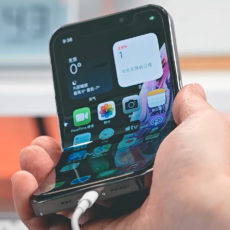
Apple is reportedly set to launch their long rumored foldable iPhone in late 2026, possibly around the second half of the year. It’s purported to be in development with a book-style folding design, similar to the Samsung Galaxy Z Fold, rather than a clamshell style like the Galaxy Z Flip. This means it would likely have a larger inner display—rumored to be around 7.8 inches when unfolded—for a tablet-like experience, alongside a smaller outer display of about 5.5 inches for use when folded.
Analyst Ming-Chi Kuo claims that it will have a liquid metal hinge that is 2.5 times stronger than titanium alloys, offering superior resistance to bending, deformation, and dents. That’s a big deal for a foldable phone, where the hinge takes a beating from constant folding—potentially tens of thousands of times over its lifespan.
- Pixel 9 Pro with Gemini is the most powerful Pixel yet, and now comes in two sizes; it has a pro-level camera and it’s engineered by Google, so it...
- Unlocked Android phone gives you the flexibility to change carriers and choose your own data plan[1]; it works with Google Fi, Verizon, T-Mobile,...
- Google Pixel 9 Pro’s triple rear camera is the most powerful Pixel Camera yet; get high-quality video up to 20x with Super Res Zoom Video[2];...
Thickness is another focus: it could be as slim as 4.5–4.8 mm when unfolded (thinner than most phones) and 9–9.5 mm when folded, borrowing tricks from the ultra-thin iPhone 17 Air. Battery-wise, there’s talk of high-density cells, possibly hitting 5,000 mAh across two stainless steel-cased units, which would be impressive for such a thin device and could rival the iPhone 16 Pro Max’s endurance.
As for the cameras, details are sparse, but some rumors point to a dual rear setup (main and ultra-wide, no telephoto), with two front-facing cameras—one for each display state. Interestingly, Face ID might get swapped for a Touch ID power button, likely due to the folding design’s constraints. The processor’s a safe bet to be an A-series chip, maybe an A20 or variant, given the 2026 timeline, paired with Apple’s own modem (like the C1 or C2).
[Source]










